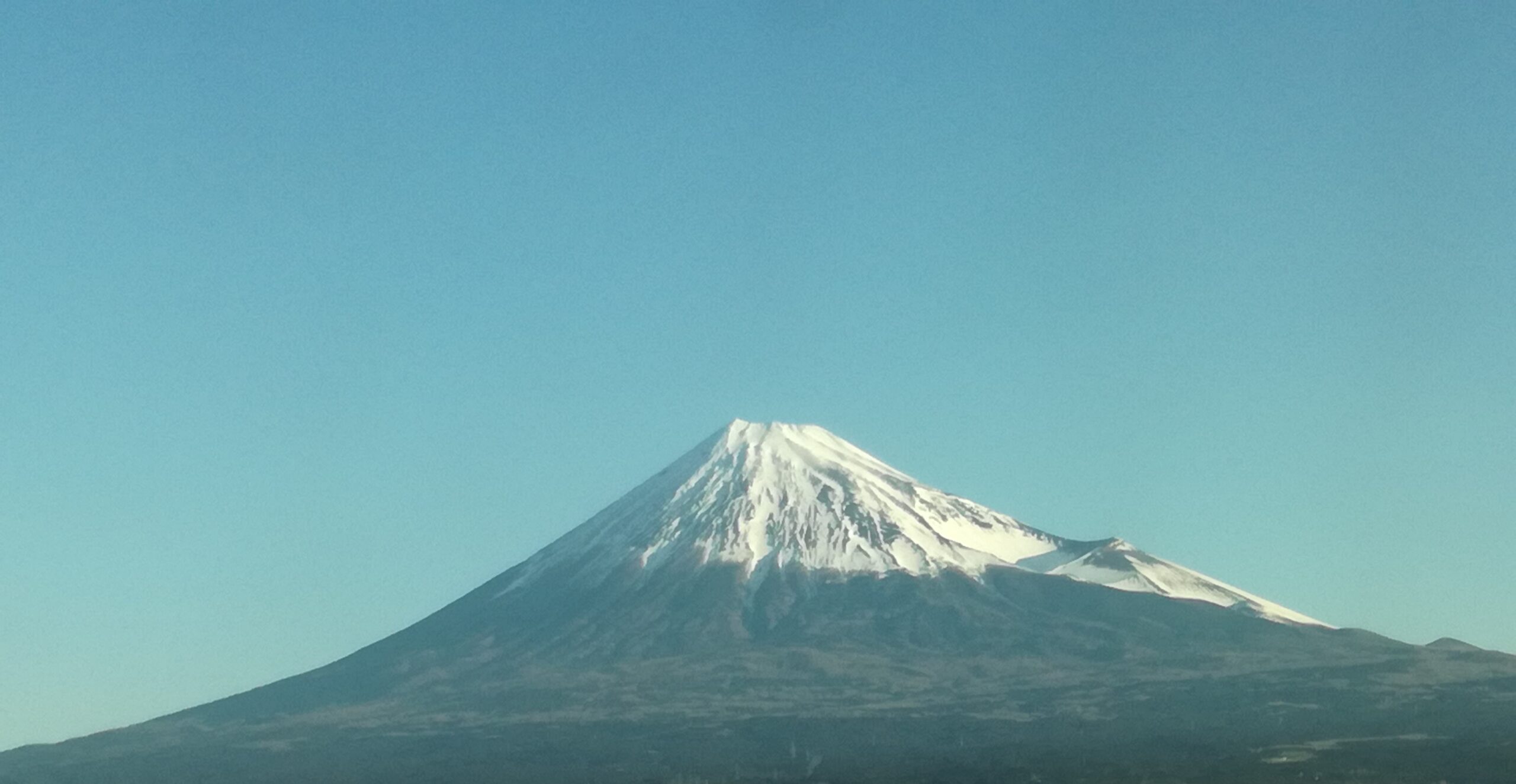When you take a bullet train called “Shinkansen” from Tokyo to Nagoya/Osaka, I recommend you to have a window sheet, E, whatever the row and you can see the Mt. Fuji on the right hand side if it is a sunny day and you are lucky like me as shown in the photo after pass Mishima Station and at around Shin-Fuji Station. This is the most famous mountain and symbol of Japan located in both Shizuoka Prefecture and Yamanashi Prefecture with the height of 3,776m which is the highest in Japan. The shape of the mountain is quite beautiful with conical stratovolcano.
The Mt.Fuji was created by several eruptions from ancient and people in Japan consider the mountain as a sacred mountain and stand in awe of it. A shrine was established at the foot of the mountain that people can worship from a distance. Later, Fujisan Hongu Sengen Taisha and Kitaguchi Hongu Fuji Sengen Jinja were established. The Mt. Fuji prospered in Heian period and in the middle Ages of Japan to train on the mountain in order to receive spiritual enlightenment. In the early modern period in Japan, many people performed Fujizenjo (Fuji ascetic training), which is the practice of reaching enlightenment through climbing the Mt.Fuji.
In 2013, The Mt. Fuji became a World Heritage site with such sacred place and source of artistic inspiration.
You can climb the Mt.Fuji in summer season in July and August. You can go up to the 5th station by car or bus and have to walk from there to the top. Most people want to see the sunrise from the summit. There are huts on the top you can take a rest.
If you have a chance to visit Japan in summer, you can try this practice of reaching enlightenment through climbing the Mt.Fuji.




Comments